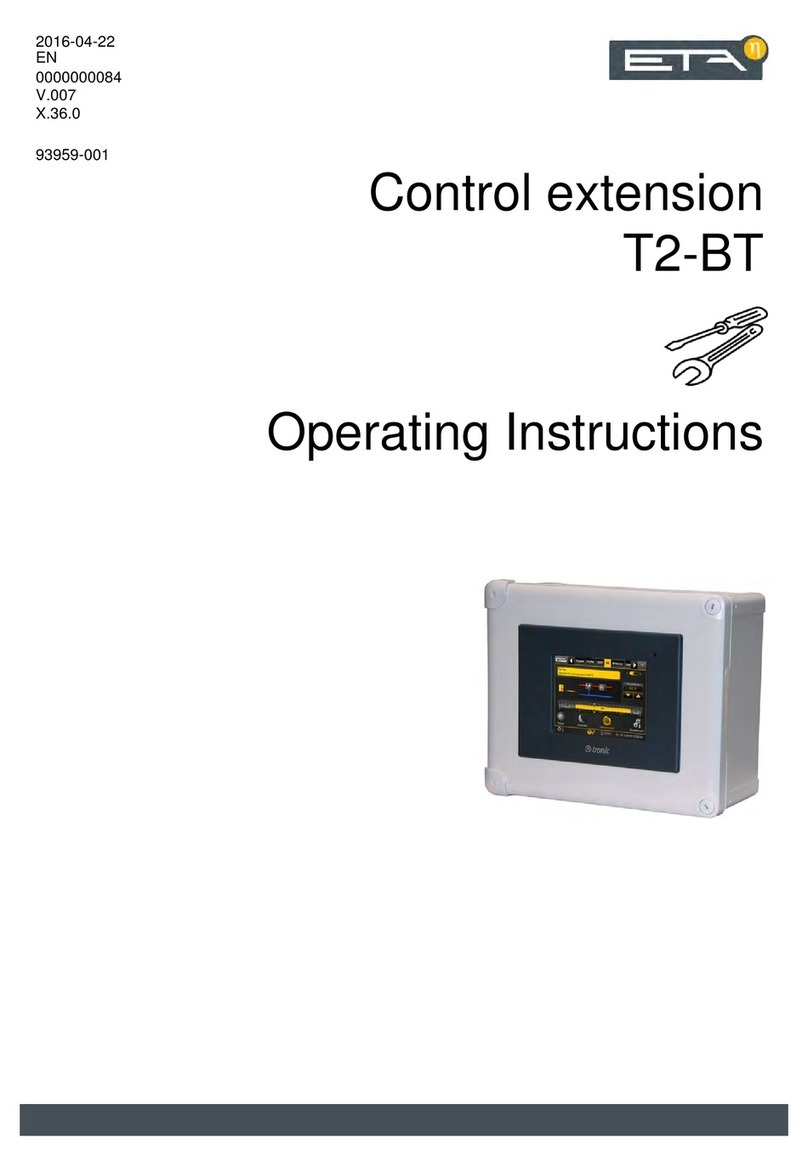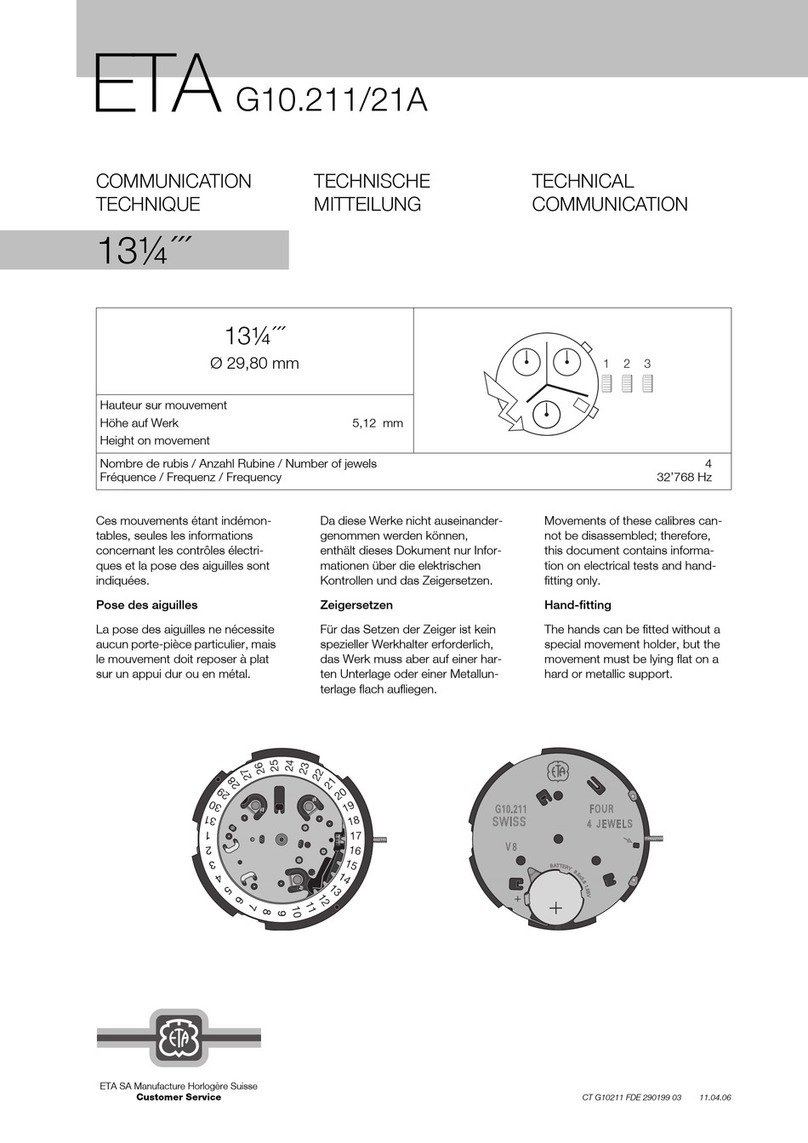
4 www.eta.co.at
General information General
1 General
1.1 General information
Copyright
All contents of this document are property of ETA
Heiztechnik GmbH and are protected by copyright.
Any reproduction, transfer to third parties or use for
other purposes is prohibited without written permission
from the owner.
Subject to technical changes
We reserve the right to make technical modifications
without notice. Printing and typesetting errors or
changes of any kind made in the interim are not cause
for claims. Individual configurations depicted or
described here are only available optionally. In the
event of contradictions between individual documents
regarding delivery scope, the information in our current
price list applies.
Software Description
The software version described in this documentation
corresponds to the version valid at the time of publica-
tion. The software version installed on your product
may differ from that described in this documentation.
A software update to a more recent version can
always be performed. With the appropriate au-
thorisation, the required files can be found at
"www.eta.co.at".
Explanation of symbols
Instructions and information
Layout of safety instructions
SIGNAL WORD!
Type and source of danger
Possible effects
• Measures for avoiding the danger
Types of safety instruction
CAUTION!
On non-compliance with this safety instruction, there is
a risk of material damage.
WARNING!
On non-compliance with this safety instruction, there is
a risk of physical injury.
DANGER!
On non-compliance with this safety instruction, there is
a risk of major physical injury.
1.2 Warranty, guarantee and liability
Installation in a dry, frost-proof room
A dry, frost-proof room is required for the installation.
Heed the drinking water ordinance
In terms of drinking water, the chemical, physical and
bacterial limits stated in the applicable national
drinking water ordinance must not be exceeded. See
chapter on 8 "Information on cold water".
Calcification
Potential calcification of the fresh water module is
excluded by the warranty. In the case of water with par-
ticularly high scale-forming properties, water softening
or regular descaling may be necessary. You can find
more information in the chapter on 8 "Information on
cold water".
Safety valve for the drinking water line
Before each closed drinking water heater (=TWE /
tank) a membrane safety valve is to be installed in
accordance with DIN 1988 and 4753, Part 1 and
TRD 721. This valves opens automatically when a set
operating pressure is exceeded (6, 8, 10 bar), and
after a pressure reduction it closes again automatical-
ly.
Except flow heaters with a nominal volume of less than
3 litres.
The ETA fresh water module falls under this
exception rule. That is why no additional safety
valve is required.
With the optional circulation set, however, a
safety valve is required on the drinking water side
(10 bar) and that is why it is already installed at the
factory. This must not be blocked nor removed.
pH value between 8 and 9
The pH value of water used to fill the heating system
must be between 8 and 9.





























